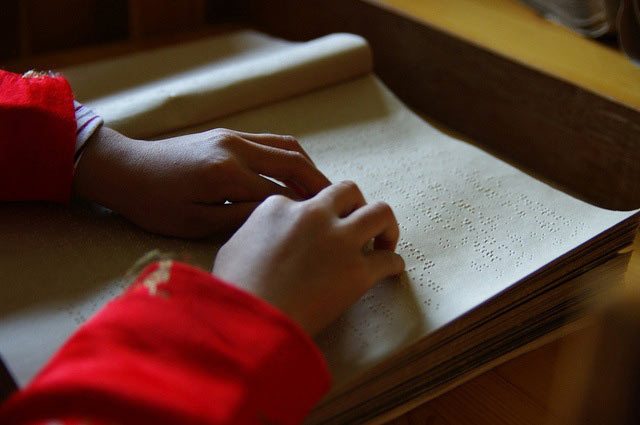According to the World Health Organization, 285 million people are estimated to be visually impaired. About 39 million are completely blind and 246 million have low vision. Blindness is a condition that affects people’s activities of daily living. People with blindness learn how to live their lives differently by relying on their other four senses. Blind people use their hearing to communicate with others and their touch to feel around their environment. One question people may ask is, “How do blind people learn?” or more specifically, “How does a person learn a new language like Spanish if they cannot see?”
Without a doubt, vision is an important component in the learning process, especially when it comes to learning a new language. We use our vision to see how vocabulary words are spelled, to see how sentences are constructed, to read texts, to write notes, to observe how words are pronounced by the mouth, and so much more. Despite all of this, learning a language without the benefit of sight is by no means impossible. People who are blind primarily learn by listening to a teacher or audio books and by reading books in Braille. In other words, learning through hearing and touch can be just as effective as learning through vision.
Hearing is a very important sense for those who cannot see. Blind people use their sense of hearing to communicate with others, to understand their environment, and, of course, to learn. Someone who is blind can learn a new language by sitting in a class or by talking with a tutor. A blind person taking a Spanish class would have to listen very carefully to what the professor teaches such as how specific words and phrases are pronounced. It would be most helpful for this person to use a tape recorder in class so lectures can be re-listened to as many times as needed. One-on-one Spanish tutoring sessions can be very helpful because students can ask direct questions to their tutor and the tutor can accommodate their teaching style for the student’s learning needs.
Another way to learn Spanish for someone who could not see is by listening to audio podcasts. A vast majority of Spanish teaching lessons contain an audio component. There are also many sites online that offer Spanish audio lessons, files, and MP3s that can be easily downloaded for personal devices. These audio files are very important because correct pronunciations of words, phrases, and sentences are crucial to learning Spanish or any language for that matter. By constant listening, repetition of sounds, and pronunciation practice, anyone can learn a new language such as Spanish without having to read a word.
In addition to using their sense of hearing to learn, blind people also learn new subjects and languages through their sense of touch. Braille is a written language in which letters are symbolized by raised dots that can be felt with the fingertips. People who are blind learn Braille in order to read and write. Braille differs for every language since language have different letters in their alphabet. For example, in addition to the letters in the English alphabet, the Spanish alphabet also includes letters with accents that represent different sounds.
Blind or not, anyone can also learn Spanish just by engaging in conversation with native Spanish speakers. This is where language exchange and learning exchange comes into play. Language exchange is the process of teaching a language you know and learning a new language you are interested to learn in exchange. Learning exchange is a similar process but involves opportunities to learn subjects beyond language. For example, if I am interested in learning Spanish and I am very skilled in Math, I can meet up with a person who can teach Spanish and may need a little help in Math. We can then exchange Spanish and Math lessons with each other. LRNGO is a social media website that facilitates free learning exchange with people locally and around the world. By signing up for this site, you can meet hundreds of people who are willing to teach and are yearning to learn!
In conclusion, a disability such as blindness in no way has to hinder the process of learning a new language. Without vision, a new language such as Spanish can be learned through hearing and touch. Blind people can learn Spanish by listening to teachers, tutors, or friends made through learning exchange. People with blindness can also learn Spanish by learning and practicing with Spanish’s Braille system.
Photo Credit: Christian Liechti





